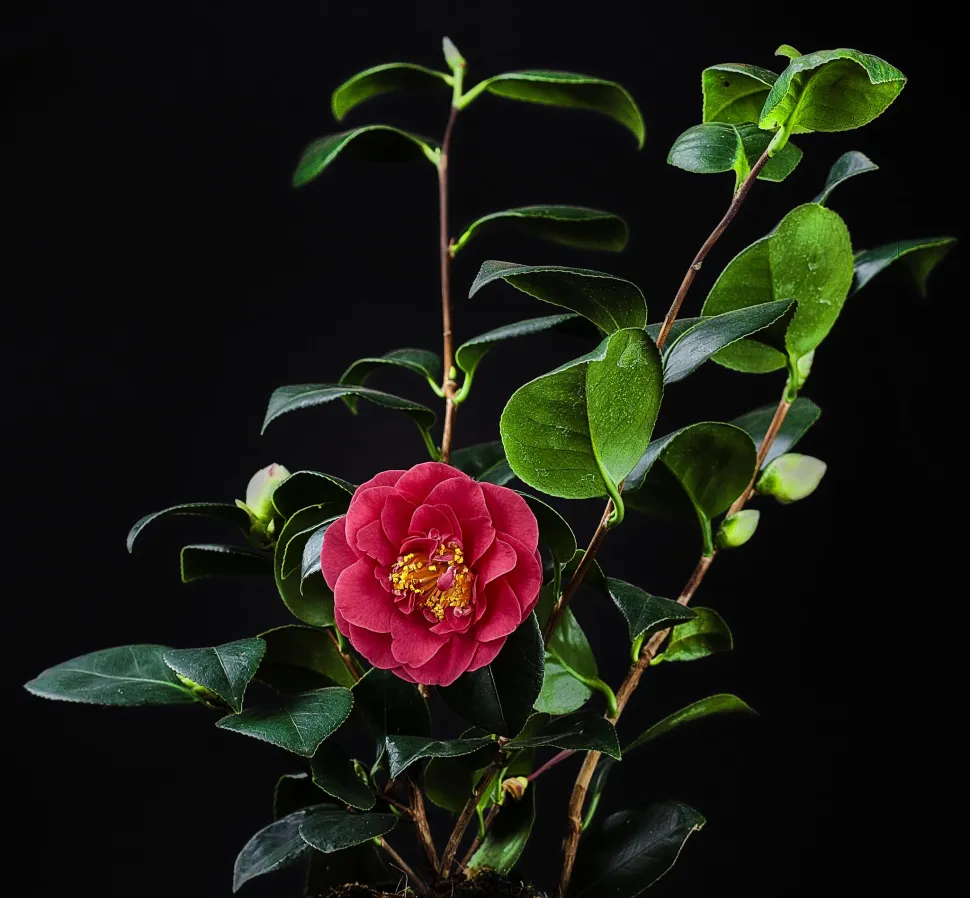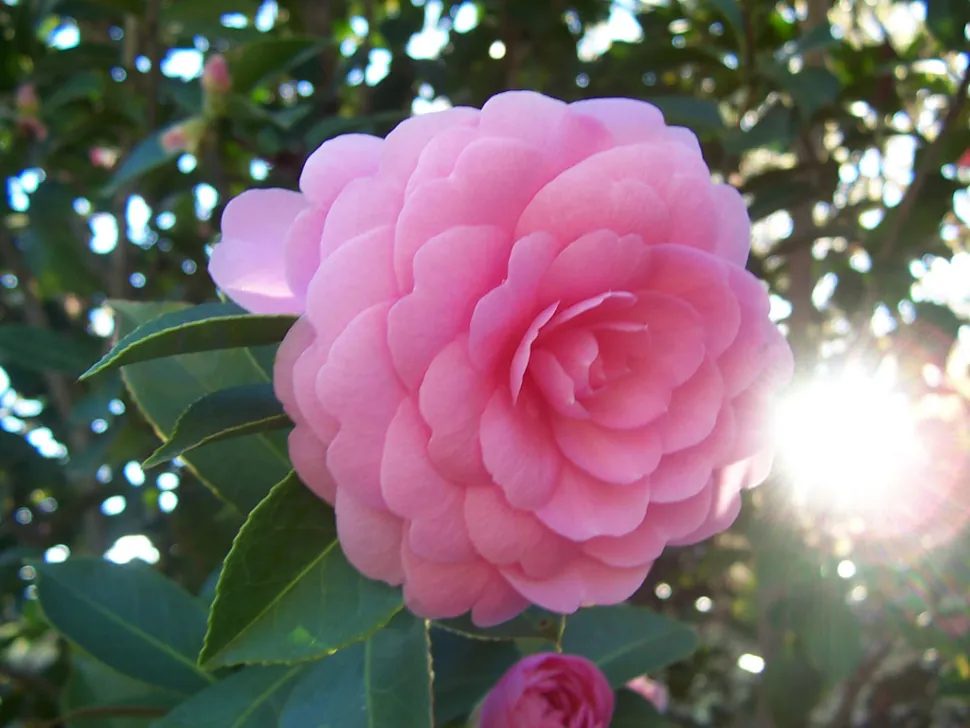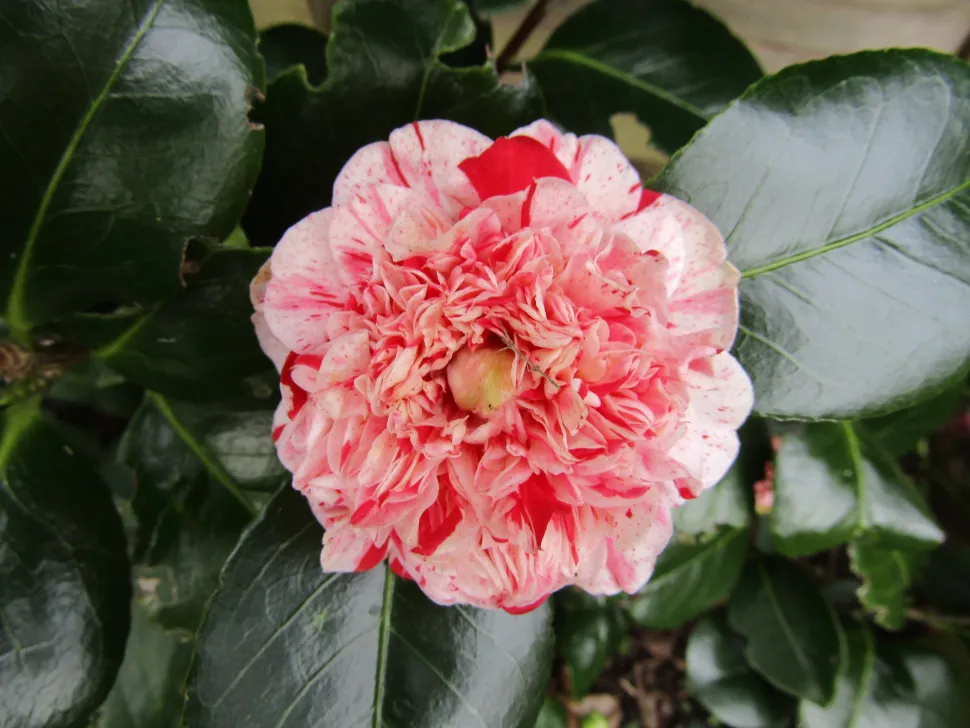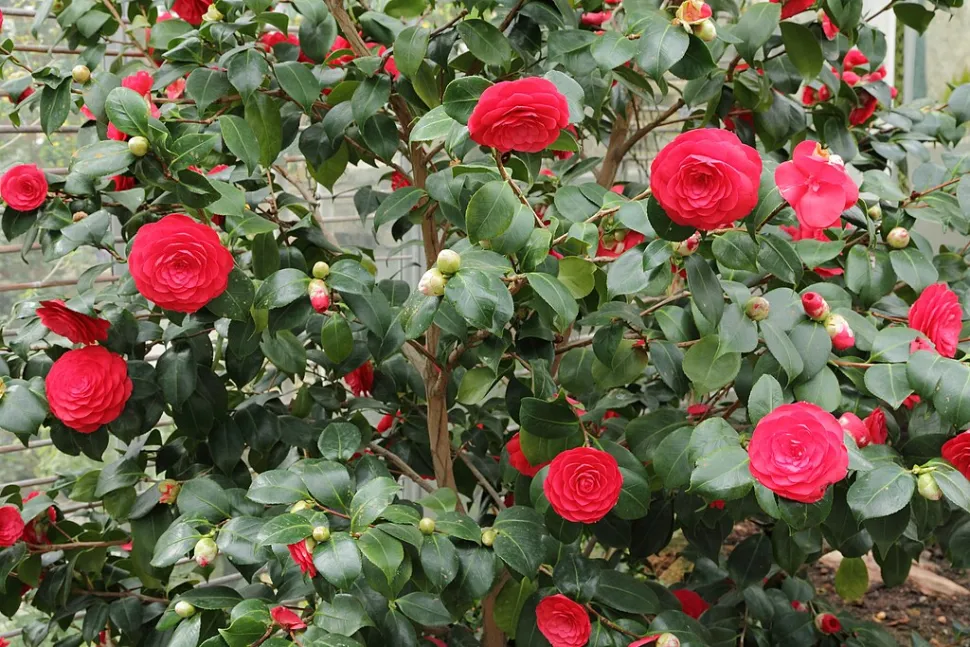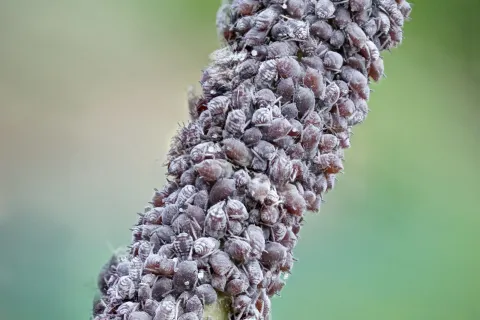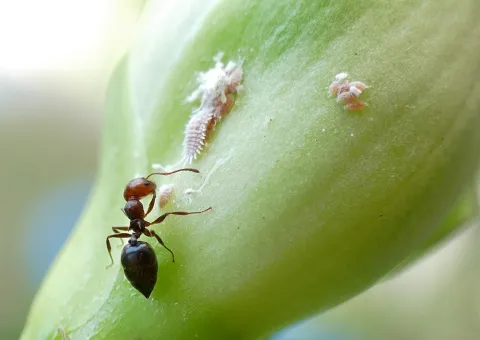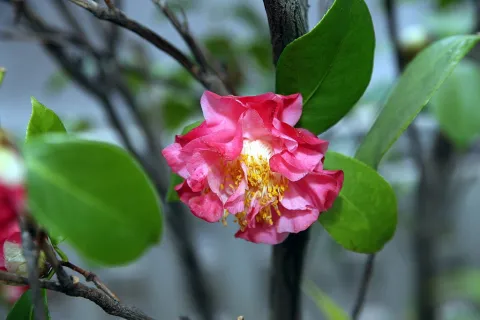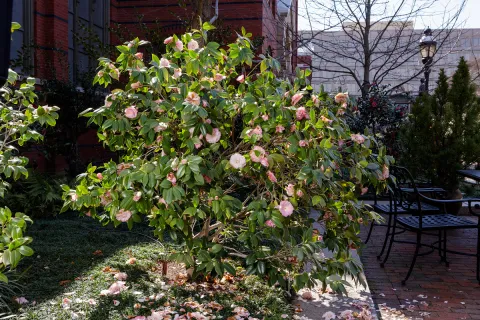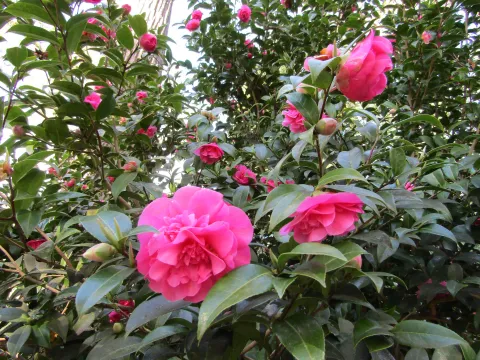Camellia japonica: make a guard of honor of the Japanese rose!
Popularized by Alexandre Dumas fils's novel in the 19th century, the Japanese camellia (in Latin Camellia Japonica) is also a star in our gardens. This member of the Theaceae family comes to us from Japan, China and Korea. It delights us with its winter bloom and the beauty of its flowers.
How to recognize the Japanese camellia, Camellia japonica?
Camellia japonica is a flowering shrub with an upright, spreading habit. In its native habitat, it can form a tree over ten meters tall. In our latitudes, it reaches a maximum height of five to seven meters and a spread of three meters.
The trunk, generally short, divides into several grayish branches, or purple-brown for those of the year. These form a dense branching system that bears tough, evergreen foliage.
The oval or elliptical leaves measure five to twelve centimetres in length. The upper surface is a shiny dark green, whilethe underside is paler. A prominent, greenish-yellow midrib divides the leaf blade in two. The leaf edges are slightly serrated, with the tips tapering to a rounded point.
Flowers appear from winter to spring. Their shape varies according to variety. They can be single, semi-double Camellia 'Nuccio's Jewel) or double Camellia 'Nuccio's Pearl and Camellia 'Margaret Davis). The flowers of some cultivars, such as camellia 'Debbie resemble peonies. Others, like camellia 'Brushfield's Yellow, are reminiscent of anemones. Single or grouped in pairs, the flowers measure between five and ten centimetres in diameter. Their petals are fleshy and their stamens yellow.
Flower color also depends on the hybrid. White, pink, yellow or red, solid or bicolored, there's something for everyone! Some varieties, such as lady Vansittart' Camellia, even display several shades on the same plant.
After flowering, the Japanese Camellia produces fruits in the form of five-lobed woody capsules, each containing one or two seeds. The seeds are rich in an oil with multiple properties, used in the cosmetics industry, in the food industry and as a lubricant.
The Japanese rose is not considered a toxic plant forhumans or pets. Both its flowers and leaves are harmless.
Our maintenance tips
Japanese Camellias are not difficult plants to care for. But they hate limestone. You need to provide them with acid soil and water them with rainwater.
Watering
Japanese Camellias can withstand neither drought nor excess water.
Before watering, check the condition of the potting soil. The surface must be at least one centimeter dry.
Before watering, check the condition of the potting soil. The surface must be at least one centimeter dry.
Repotting
Get a pierced pot that's wider than it is tall. Roots tend to spread out rather than grow deep. Fill the bottom with clay balls to optimize drainage.
Japanese Camellias grow in acid soils. Prepare a mixture containing 50% heather earth and 50% universal potting soil. Pour on a layer and plant your subject. Fill in with your substrate and press down.
Water with rainwater to expel air bubbles and encourage rooting.
Fertilization
To promote the growth of your Camellia japonica, apply fertilizer in spring and summer.
Fertilize with a fertilizer for acid-loving plants. You can choose a hydrangea or bougainvillea fertilizer, for example.
Prune
Remove wilted flowers that don't fall off by themselves.
You don't have to prune your japanese Camellia. However, it may be beneficial to cut back dry twigs. You can also cut back branches by about ten centimetres after flowering to force the plant to branch out.
Always use a clean, sharp tool to promote healing and prevent disease.
Plantation
When the risk of frost has passed, it's time to plant.
Choose a shady or semi-shadylocation, away from other plantings. Indeed, japanese Camellias have shallow roots and can't stand competition from other species. You can, however, plant several varieties side by side to form a hedge.
Soak the root ball in rainwater. Meanwhile, dig a hole twice the size of the root ball.
Japanese Camellias require acid soil. If your soil is acidic, plant the plant and fill in with garden soil.
If your soil is chalky, sandy or basic, place a geothermal felt at the bottom of your hole. Mix equal parts heather soil and universal potting soil. Pour in a layer of substrate, then plant your shrub. Fill in with your mixture.
Mulch to keep the soil cool and protect the roots from the cold. You can use pine bark, for example, which will add acidity as it decomposes.
Water generously with recuperated rainwater to facilitate rooting.
Cutting
Take a lignified branch about fifteen centimeters long. Remove the flowers and keep only the top pair of leaves.
Prune the tip of your cutting to encourage roots to appear. Using a clean knife, bevel the end of the branch and remove about two centimetres of bark.
You can dip the tip in cutting hormone.
Obtain a perforated pot. Fill it with a mixture of potting soil, sand and heather. Make a pilot hole and plant your cutting.
Cutting is done in a smothered state. Place your cutting in a mini greenhouse or transparent box. You can also cover it with a translucent plastic bag.
Spray the leaves and substrate to maintain a moist atmosphere, and aerate for a few minutes each day.
Keep your cutting indoors, in a bright, heated room.
Diseases / Threats
Information
| Family | Theaceae - Theaceae |
| Type | Camellia - Camellia |
| Species | Japanese Camellia - Camellia japonica |
| Lifecycle | Perennial |
| Foliage | Evergreen |
| Exposures | |
| Substrats | |
| Planting methods |
Open ground In pots In tubs |
| Categories | |
| Tags |
Beginner Flowery Rustic Soiffarde |
| Origin |
Southeast Asia |
| Hardiness (USDA) | 7b |
| Leaf color |
|
| Flower colors |
|
| Fruit color |
|
Discover plants from the same family
